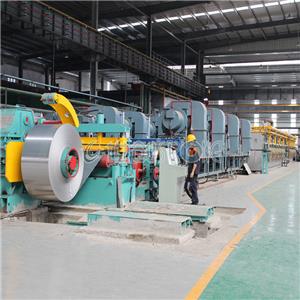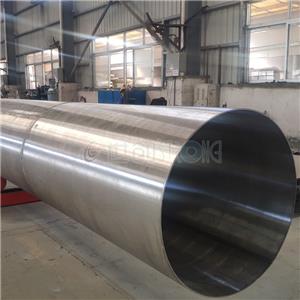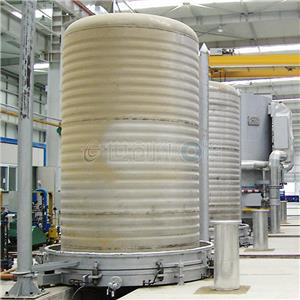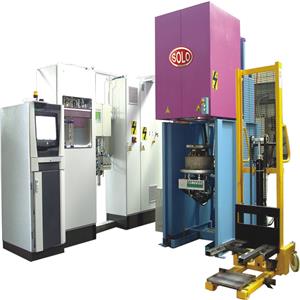Dirt and emission reduction measures in operation of heat treatment furnace
During the operation of the heat treatment furnace, the substances that pollute the environment include waste gas, waste water, waste liquid and waste residue.
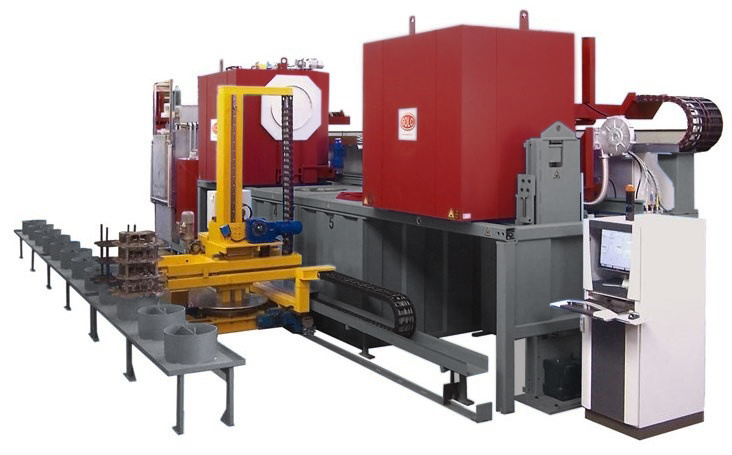
In order to reduce pollution, the following emission reduction measures are taken:
1) Reduce the emission of waste gas and wastewater. Two sand seals are used for the plug and furnace seal of the Bell-type furnace. When carburizing and heating with protective atmosphere, a small amount of waste gas seeps from the furnace mouth, which can be naturally burned, with little environmental pollution. The quenching tank is protected by nitrogen spray and sealed by the quick tank cover, so there is little oil smoke during quenching. Air heat exchanger is used to cool the quenching medium of quenching tank to reduce water consumption. The cleaning waste liquid are regenerated and recycled. A small amount of smoke and dust on the production line can be treated with a clean heat treatment oil fume collection and exhaust system to achieve the standard discharge.
2) Regenerate and recycle the waste liquid. Bell-type furnace uses a high tower overflow recovery device for oil cleaning wastewater. The waste oil automatically floats to the top of the high tower and slowly overflows. The water at the bottom of the high tower is free of waste oil pollution, and can be pumped back to the cleaning tank for cleaning and recycling. Compared with the traditional oil scraping method, the amount of spilled waste oil is less and the water in the waste oil is less, which is easy to reuse after treatment. For the salt cleaning wastewater, the concentration heating separation method is adopted. The salt in the wastewater is heated, evaporated, stored and dehydrated to become solid salt, which is put back into the salt solution quenching tank for reuse; The water in the waste liquid is evaporated and cooled into clean water, which can be reused for cleaning. At the same time, the water vapor is also used for heating the cleaning water, realizing the recovery and utilization of waste heat and basically achieving zero emission.
3) Adopt advanced processes and equipment to replace polluting processes and equipment. Bell-type furnace can replace the high and medium temperature salt bath furnace and lead bath furnace. The thin layer carburization and thin layer nitriding in its process can replace the salt bath carburization and salt bath nitriding. The induction heating local heat treatment can replace the salt bath furnace and lead bath furnace local heat treatment. The vacuum cleaning and water cleaning agent cleaning can replace the chloride and gasoline kerosene cleaning.
4) Strengthen the waste management and recycling of heat treatment furnace.
5) Strengthen staff training and improve staff quality.
6) Establish a reward system, encourage the selection of energy-saving and emission-reducing heat treatment furnaces, and limit heat treatment equipment and processes with high energy consumption and high pollution.

Heat treatment furnace is the basic condition of heat treatment production and has a significant impact on the quality of heat treatment and energy conservation and emission reduction. Therefore, the performance and quality of heat treatment equipment as well as the level of energy conservation and emission reduction in operation should be highly valued. It is appropriate to select high-quality heat treatment equipment and advanced heat treatment technology that meet the standards of energy conservation and emission reduction in the long run. With the strengthening of environmental protection awareness around the world, China's various rectification measures for energy conservation and emission reduction are becoming more and more strict and standardized, and the business model of post-production pollution control is increasingly difficult to maintain, and the cost is higher. There is no doubt that Bell-type furnace provides you with an optional advanced equipment.
A continuous annealing furnace line is a type of industrial furnace that is used to heat and cool metal strips in a continuous process. The furnace line typically consists of a series of chambers, each of which is heated to a different temperature. The metal strip is passed through the chambers in a conveyor belt, and the temperature of the strip is gradually increased as it passes through the line.
The purpose of annealing is to soften the metal and make it more ductile. This is done by heating the metal to a temperature above its recrystallization temperature, and then cooling it slowly. The recrystallization temperature is the temperature at which the metal's crystal structure changes from a distorted form to a more regular form.
Continuous annealing furnace lines are used in a variety of industries, including the steel, aluminum, and copper industries. They are used to produce a variety of metal products, including sheet metal, wire, and tubing.
Here are some of the benefits of using a continuous annealing furnace line:
It is a more efficient way to heat and cool metal strips than traditional batch annealing methods.
It produces a more uniform product with better quality control.
It can be used to produce a wider variety of metal products.
Here are some of the challenges of using a continuous annealing furnace line:
The furnace line is a complex piece of equipment, and it requires careful maintenance.
The metal strip must be precisely controlled in order to ensure that it is heated and cooled evenly.
The furnace line can be a fire hazard, and it must be carefully operated.
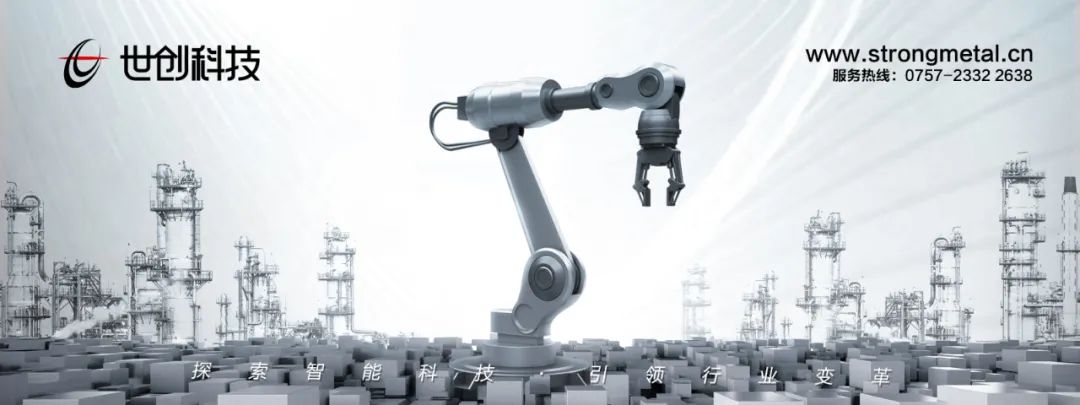
Service Hotline | +8613923269158
E-mail | daniel@strongmetal.com.cn
Website | www.strong-furnace.com
Address | No. 32, Shizhou, Chencun, Shunde, Foshan, Guangdong

